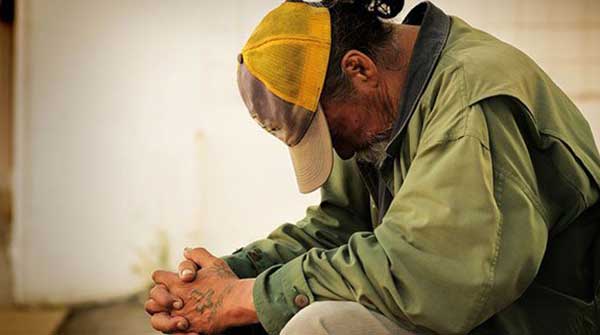Canada’s debt exceeds $1.2 trillion, or nearly $31,000 for every person in the country
 New Year’s and hangovers go together like rum and eggnog. Some hangovers can be eased with a fistful of Tylenol and rehydration. Others, however, linger on, causing long-term damage to our future health.
New Year’s and hangovers go together like rum and eggnog. Some hangovers can be eased with a fistful of Tylenol and rehydration. Others, however, linger on, causing long-term damage to our future health.
Such is the crapulence imposed on us by our recklessly free-spending federal government. The hangover from ill-considered mission creep has set poor Canadian working stiffs on course for choking tax increases and an underperforming economy in what should be one of the most prosperous countries in the world.
The alarm a lot of people feel when they step on the scales in January drives them into action – the familiar quest to cut back on the things that have made us too fat. (Sadly, I include myself in this cohort.) Yet, federal politicians don’t seem to share such alarm; they just keep packing on the fiscal pounds.
Numbers can be numbing, so I’ll try not to overwhelm you. But a few figures are necessary to illustrate just how big the problem is.
 |
| Related Stories |
| ‘Food Bucks’ one solution to Canada’s growing food insecurity crisis
|
| Widespread financial vulnerability surges in Canada
|
| More proof carbon taxes make life more expensive
|
The federal government’s current debt is more than $1.2 trillion, or nearly $31,000 for every person in the country, according to debt.ca. If you’re counting, that number has 12 zeros and it’s bigger than the 2023 Gross Domestic Product of Saudi Arabia.
The amount we owe is scary enough, but even more alarming is the rate of debt growth. The federal government alone is adding $878 of new debt every second, or nearly $110 million of new debt every day.
Don’t forget each province is racking up its own debt as well. Alberta, so proudly “debt free” just 20 years ago, now carries a debt of $78.5 billion. You can check your own province’s debt status at the Canadian Taxpayer’s Federation website. Click Provincial Debt Clocks in the top right-hand corner and scroll down to your province.
A lot of factors have conspired together to create this growing crisis. The Trudeau government spent like drunken sailors during the COVID-19 pandemic with the Canada Emergency Wage Subsidy (CEWS) and Canada Emergency Response Benefit (CERB), supposedly to help small businesses avoid bankruptcy. Such support was well-advised, but the level of waste and general lack of accountability around the handouts was simply criminal.
The Fraser Institute estimates that of the $359.7 billion of the federal government’s COVID spending, 25 percent ($89.9 billion) was wasted. Total federal COVID spending has added $8.3 billion to present-day interest costs.
There are many harmful effects to carrying a massive debt. For one, the government spends huge amounts of money each year just on interest charges. That is money that could have been spent on other priorities. (The $34.7 billion the feds spent on debt servicing charges in 2022/23 is more than it spends on child-care benefits. See the cause/effect?)
There is also no money left to spend on areas where we are vulnerable. In 2013, for example, Canada promised NATO it would work toward military spending equal to two percent of GDP. Yet, last year, the budget for the Canadian military was $36.7 billion or just 1.29 percent of GDP. This is happening at a time when international threats are increasing. We have, in effect, given up on having the capacity to defend ourselves.
As the minority federal Liberal government kowtows to the NDP in an effort to cling to power, it keeps agreeing to new spending on social programs that will – quite regrettably – be financed through more borrowing. Do you see where this is heading?
Meanwhile, the feds are adding costs in areas where they don’t really get any political points. The Public Service Commission of Canada recently reported that federal public service reached a record size in 2023. The 274,219 employees at the end of the March 31, 2023, fiscal year, as defined by the Public Service Employment Act, is 40.4 percent higher than in 2014-15, when the Liberals regained power under Justin Trudeau.
The Treasury Board of Canada Secretariat puts the figure even higher by including departments and agencies not included in the PSC count. It puts the total at 357,247 people.
It’s important to be clear about where this debt train is headed. As debt grows, our currency devalues. We become less competitive on the world stage. Ultimately, we lose jobs and our standard of living slips into a death spiral.
Canadians seem to have a disconnect between how they feel about debt and what they do. A July 2023 survey conducted by Ipsos for the Montreal Economic Institute, for example, found that Canadians are generally dissatisfied with the federal government’s management of public spending and nearly two-thirds think the government is “not doing a good job at allocating funds to the most important issues facing Canada today.” Amen to that. More than 55 percent of Canadians believe government spending is too high, while just 27 percent believe it’s acceptable, according to the survey.
And yet, even as Canadians say they are concerned about government debt, they are piling on personal debt, according to a report from TransUnion. Canadian consumer debt hit an all-time high of $2.32 trillion in the first quarter of 2023.
Now, barring a bolt of lightning from the Heavens, the Liberal regime is a dead government walking. Canadians, exasperated with Prime Minister Justin Trudeau’s incessantly hollow blather, are turning toward the federal Conservative Party despite its snivelling and singularly unlikeable leader, Pierre Poilievre. Part of the appeal is the promise to reduce the deficit by cutting government spending while encouraging growth by eliminating red tape. (No mention of the pain such cuts will inflict.)
We may not have any other choice. Eventually, a government that can never say no to ever-expanding social programs simply collapses upon itself, bringing catastrophic consequences for its people and draconian measures to restore order.
Reducing spending without gutting services is a multi-year project that needs to be implemented thoughtfully. It starts with reducing the size of government and attacking a culture that seems to encourage waste. Let’s not be naïve, however; slaying the debt dragon will also inevitably lead to some hard decisions about programs we may have to live without.
You don’t have to wait for a change in government to see change. If there’s one thing we know about politicians, it’s that they read polls and respond to letter campaigns. If you demand action, you can expect some response – although perhaps not as forceful a change as we’d see with a new party in power.
Now, like a lot of you out there, I am a pretty typical Canadian. I am fiscally conservative and socially progressive. (As I wrote this, I had the disturbing realization that Alberta Premier Danielle Smith describes herself the same way.) I buy my coffee from Tim’s, not Starbucks. I look for bargains at Canadian Tire. I raise my eyebrows at the taxes I pay, but I never try to dodge my share. I embrace our flawed but communitarian public health care system. I believe in all for one and one for all.
And, like many of you, I believe we are a great society because we aren’t afraid to use public money to help people who need it. If there is one thing that distinguishes us from our polarized neighbours to the south, this is it.
One day, however, our capacity to share our prosperity with those in need will run out if we can’t get our spending back to sustainable levels. The debt train will take us off the rails unless we act decisively to slow it down.
Stop being a spectator. Get involved.
Doug Firby is an award-winning editorial writer with over four decades of experience working for newspapers, magazines and online publications in Ontario and western Canada. Previously, he served as Editorial Page Editor at the Calgary Herald.
For interview requests, click here.
The opinions expressed by our columnists and contributors are theirs alone and do not inherently or expressly reflect the views of our publication.
© Troy Media
Troy Media is an editorial content provider to media outlets and its own hosted community news outlets across Canada.

